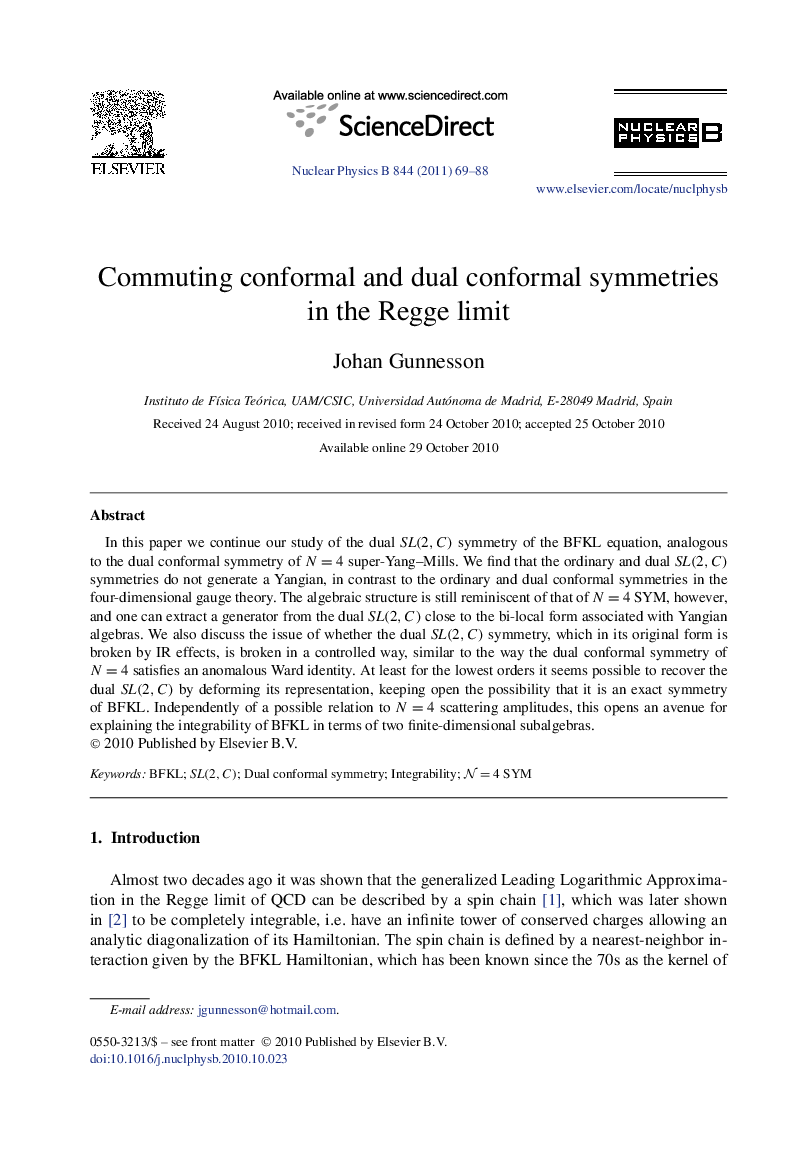| Article ID | Journal | Published Year | Pages | File Type |
|---|---|---|---|---|
| 10720708 | Nuclear Physics B | 2011 | 20 Pages |
Abstract
In this paper we continue our study of the dual SL(2,C) symmetry of the BFKL equation, analogous to the dual conformal symmetry of N=4 super-Yang-Mills. We find that the ordinary and dual SL(2,C) symmetries do not generate a Yangian, in contrast to the ordinary and dual conformal symmetries in the four-dimensional gauge theory. The algebraic structure is still reminiscent of that of N=4 SYM, however, and one can extract a generator from the dual SL(2,C) close to the bi-local form associated with Yangian algebras. We also discuss the issue of whether the dual SL(2,C) symmetry, which in its original form is broken by IR effects, is broken in a controlled way, similar to the way the dual conformal symmetry of N=4 satisfies an anomalous Ward identity. At least for the lowest orders it seems possible to recover the dual SL(2,C) by deforming its representation, keeping open the possibility that it is an exact symmetry of BFKL. Independently of a possible relation to N=4 scattering amplitudes, this opens an avenue for explaining the integrability of BFKL in terms of two finite-dimensional subalgebras.
Keywords
Related Topics
Physical Sciences and Engineering
Mathematics
Mathematical Physics
Authors
Johan Gunnesson,
